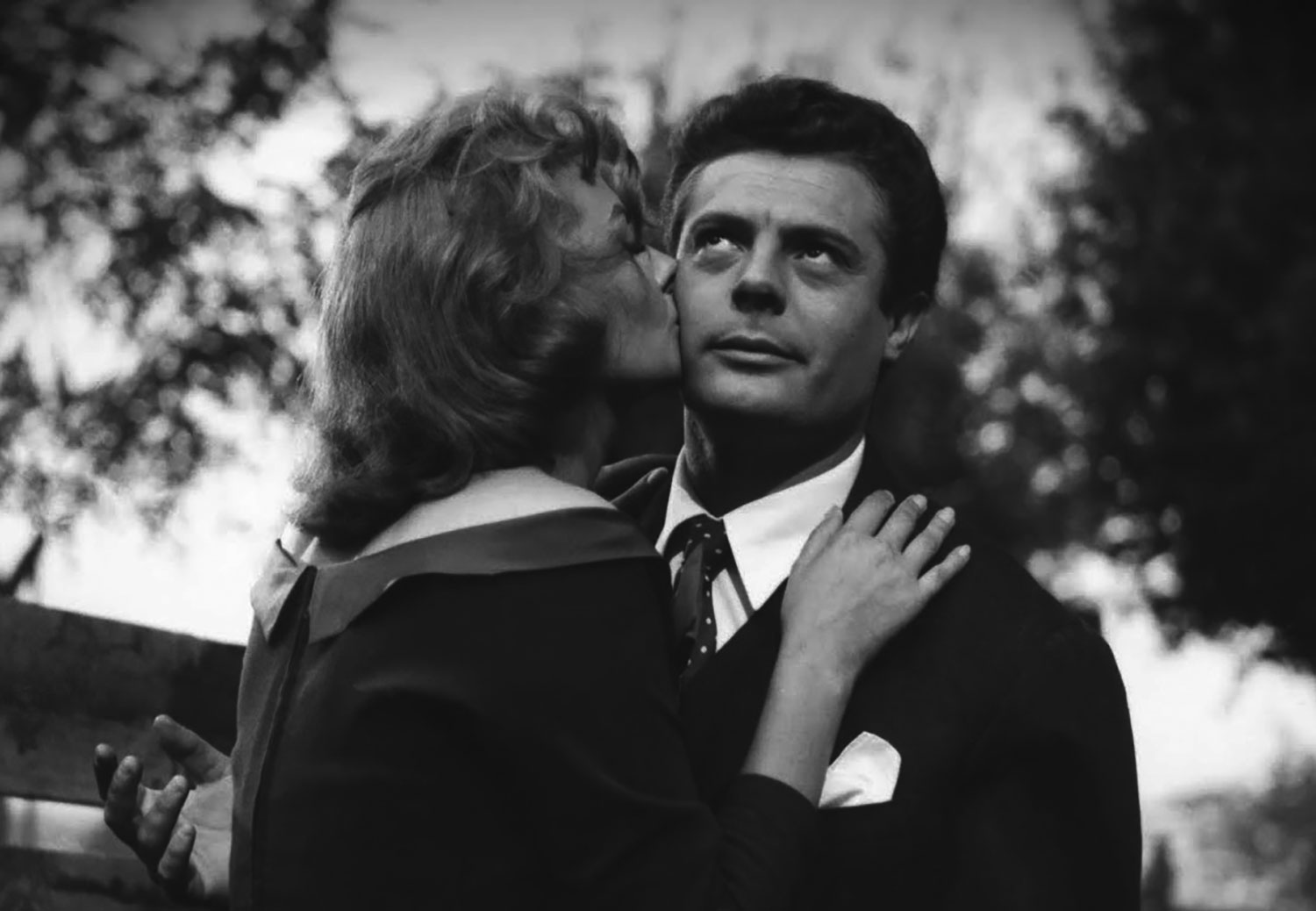
Marcello Mastroianni and Sophia Loren in La fortuna di essere donna (1955). Detail from the festival’s poster. festival.ilcinemaritrovato.it
This year the festival started with a bang: on the opening night, Martin Scorsese himself introduced the crowd on Piazza Maggiore to the screening of that masterpiece of Mexican melodrama, and personal cult of mine, that is Emilio Fernandez’s Enamorada (1946). The best part is that I wasn’t there, the inflexible law of plane fares decided I was to get to Bologna on the day after. And on the day after, everybody was talking about Enamorada – the splendid photography, the balance of comedy and high drama, the cinephilic references to Josef von Sternberg, and most of all, the scene where Maria Felix slaps Pedro Armendariz in the face. Proof that films like this aren’t widely loved only because they aren’t widely shown, and I hope the screening at Il Cinema Ritrovato will succeed in turning more Italian cinephiles into Fernandez junkies like me.
To throw more gasoline on this particular fire, one more Fernandez film was shown at the festival, in a recovered and restored version: Victimas del Pecado (1951), another flamboyant drama starring Ninón Sevilla, the rumba dancer who conquered our hearts last year in Aventurera, this time in the part of a dancer who rescues her friend’s abandoned baby and has to face hostility and hardships to raise it. Violence is real in this dark film, and dark is the sensuality of Sevilla’s dances, set in dense black and white by the great cinematographer Gabriel Figueroa. Slaps abound here too – as in Sevilla’s brutal smacking of the degenerate mother – and the villain strolls around town followed by a whole mariachi band as sort of Greek choir, but it’s Fernandez so it’s perfectly normal.
Ninón Sevilla has a small part in Carita de Cielo (1947) but is still the main attraction of this otherwise forgettable little comedy, whose only copy was also poorly preserved. Within the small Mexican presence in this year’s festival, the other discovery was Roberto Gavaldon’s Rosauro Castro (1950): the story of a town bully who thinks himself above the law and tyrannizes everybody, well beyond the point of crime. If aesthetically and narratively it matches up with contemporary Hollywood films, especially noir, it also shows something that is unthinkable in American cinema: a villain played by a big and beloved star (Pedro Armendariz) and who demands our identification, though we know he’s wrong. He will pay for his mischief in a way that could never happen to a Hollywood leading man of the same caliber, then as now.
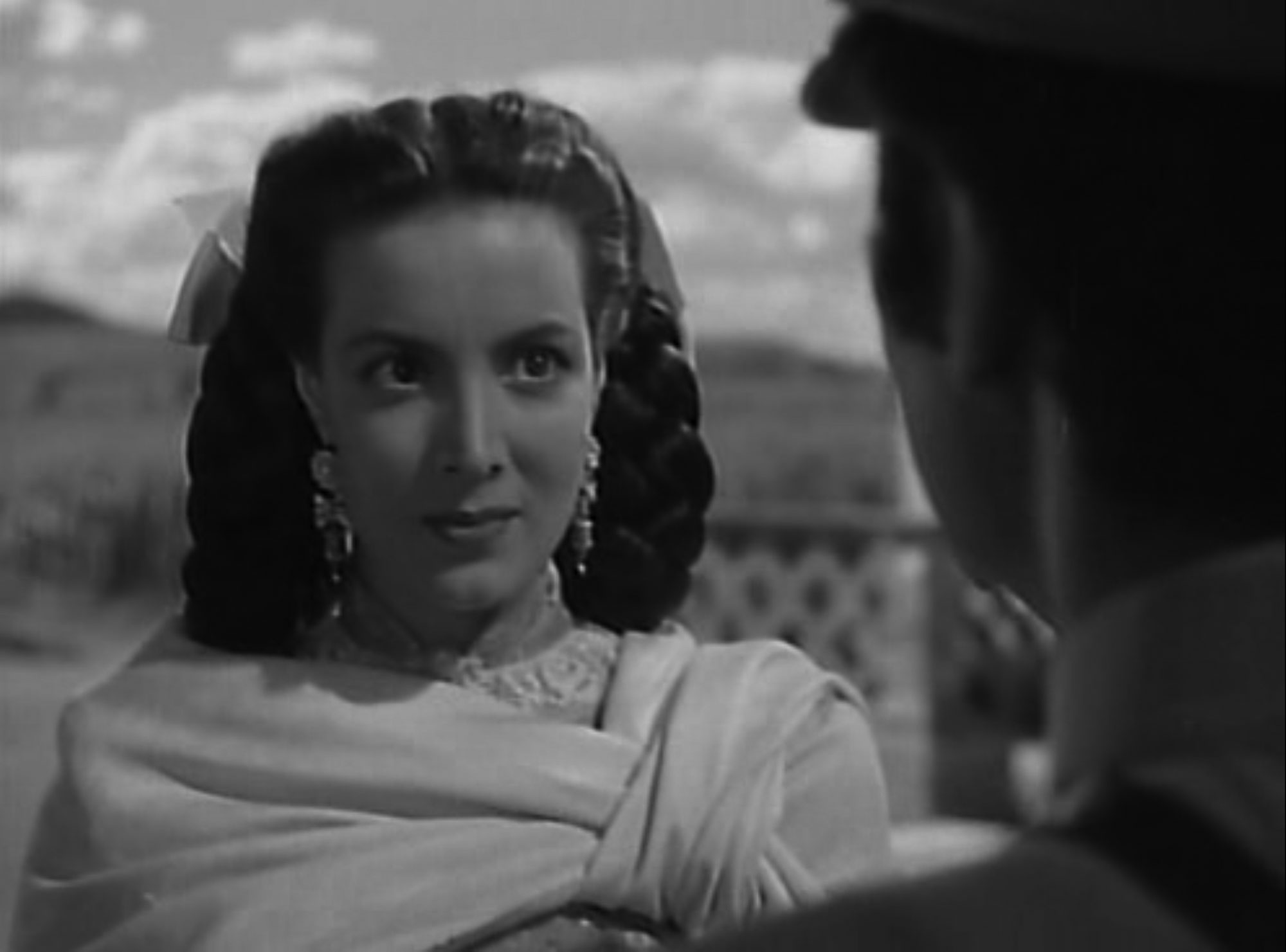
Maria Felix and Pedro Armendariz in Enamorada (1946). ok.ru
There are treasures to discover from “other” film industries, as the festival’s section “The Space Machine” testifies: a retrospective on Turkish filmmaker Yilmaz Güney, one on Soviet sound films in the mid-30s, another on Chinese cinema from the 40s – I missed them all. Having to choose, I focused on the “Cinemalibero” subsection, that offered very famous but rarely seen films from Africa and South America. From Brazil, Hector Babenco’s Pixote: The Law of the Weakest (1981) is the story of a group of street kids who escape the brutality of reform school to fall back into that of a life of crime, and though it shows some of the most incredibly degrading human experiences, the director said it’s still a Cinderella story compared to reality. Neorealist in its approach, the film stars non-professional actors and real street kids – the child who played the title character was killed by the police a few years later. It’s a punch in the guts, but a great film, also aesthetically.
Within this section I also had the chance to see the legendary political film from Argentina La Hora de los Hornos (The Hour of the Furnaces, 1968), or at least the first of its three parts, Neocolonialism and Violence. Very interesting visually, this film-manifesto is a call to arms that uses cinema as revolutionary tool – note the release year – and it’s most formally daring when its message is least sharable, as in its sanctification of Che Guevara or in its renunciation of the whole of Western Culture as oppressive in itself, including Plato and Le Déjeuner sur l’herbe. From its reputation, I expected this film to be more factual and less rhetorical – a disappointment not only because I have little patience for activism, but also because militant rhetoric is the same everywhere and doesn’t reveal much, in the end, about Argentina: the problems of its society are drowned in slogans.
Just as political, but devoid of rhetoric, is Hyènes (1992), the second and unfortunately last feature film by Senegalese director Djibril Diop Mambety: a screening not to be missed and one of the greatest films seen at the festival. I discovered Mambety’s work only recently, when I saw his debut film, the masterpiece Touki Bouki (1973) – a stunningly oneiric story that echoes Godard’s Pierrot le Fou, only much better. The rebellious lifestyle of the main characters has a totally different flavour in Senegal than in France, and yet it’s France they’re dreaming of: a looped Josephine Baker song accompanies their bike rides through a landscape of dust and zebus. Touki Bouki had been restored by the Cineteca at the Immagine Ritrovata lab and was shown at the festival in 2009: not knowing what it was, I must have overlooked it. Touki Bouki is translated as The Hyena’s Journey, so the two films have something in common even though their plots are unrelated (and the narrative structure of the more recent film is way more conventional). Hyènes is set in Mambety’s native village of Colobane, where the local storekeeper, beloved by everyone, is about to be elected mayor. The sudden return of a woman whom he had disgraced and forced to leave years before changes everything: she is now “richer than the World Bank”, and the artificial limbs she wears as consequence of an accident are made of gold. She offers the city an incredible amount of money on the condition that they agree to the execution of the shopkeeper, and the film is a study of how public opinion can be manipulated through economic interest, without formally breaching the rules of democratic government. Hyènes is taken from, and dedicated to, Friedrich Dürrenmatt. And that the best adaptation of the Swiss play Der Besuch der alten Dame should come from Senegal is yet another argument against any essentialist view of culture.
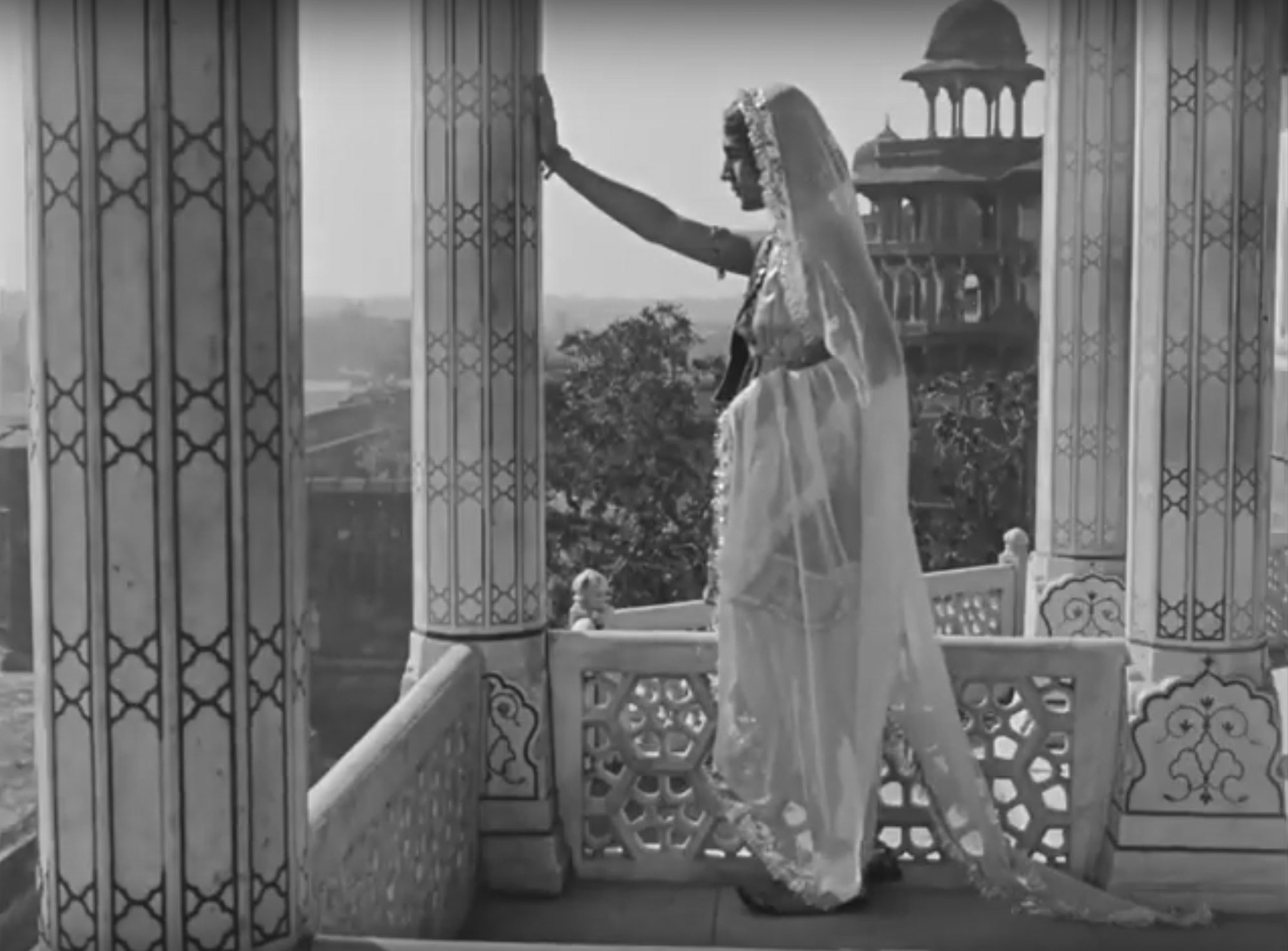
Franz Osten’s Shiraz – A romance of India (1928). Youtube.
In the “Time Machine” section, the image of distant lands came to us through a very different gaze, that of colonialism and the fascination with the exotic: in Amleto Palermi’s Il Gioiello di Kahma (1918), India is the place where European millionaires go looking for adventures, only to risk being killed by the vengeful worshippers of a god whose treasures they have stolen – a perfect allegory of cultural imperialism in this captivating and very well-shot action film from a century ago.
Shiraz – a Romance of India (1928), on the other hand, stages an idealized, romantic version of 17th-century India, imagining a fictive sentimental background for the construction of the Taj Mahal. The wonderful copy restored by the BFI features a new score by Anoushka Shankar and brings back to life the film’s extraordinary production values: shot entirely on location with local actors, the film is the second of a trilogy realized in India by German director Franz Osten, and its visual opulence has only gained in fascination with the passage of time.
Exotic is also the Spain of Rosita (1923), Ernst Lubitsch’s first American production: he was invited to Hollywood by Mary Pickford, who starred in the film but didn’t like the result, to the point of rejecting it and refusing to hand over her copy for preservation. For this reason, Rosita has always been kind of a mystery, especially for people like me, who detest Mary Pickford – with her golden curls and innocent-girl screen persona – but idolize Lubitsch. At the festival, it was shown in Piazza Maggiore with a very effective live soundtrack performed by the Mitteleuropa Orchestra, and proved to be a good film, if a bit stagnant in the middle part – it belongs to its director more than to its star, and that’s probably what she couldn’t stand about it.
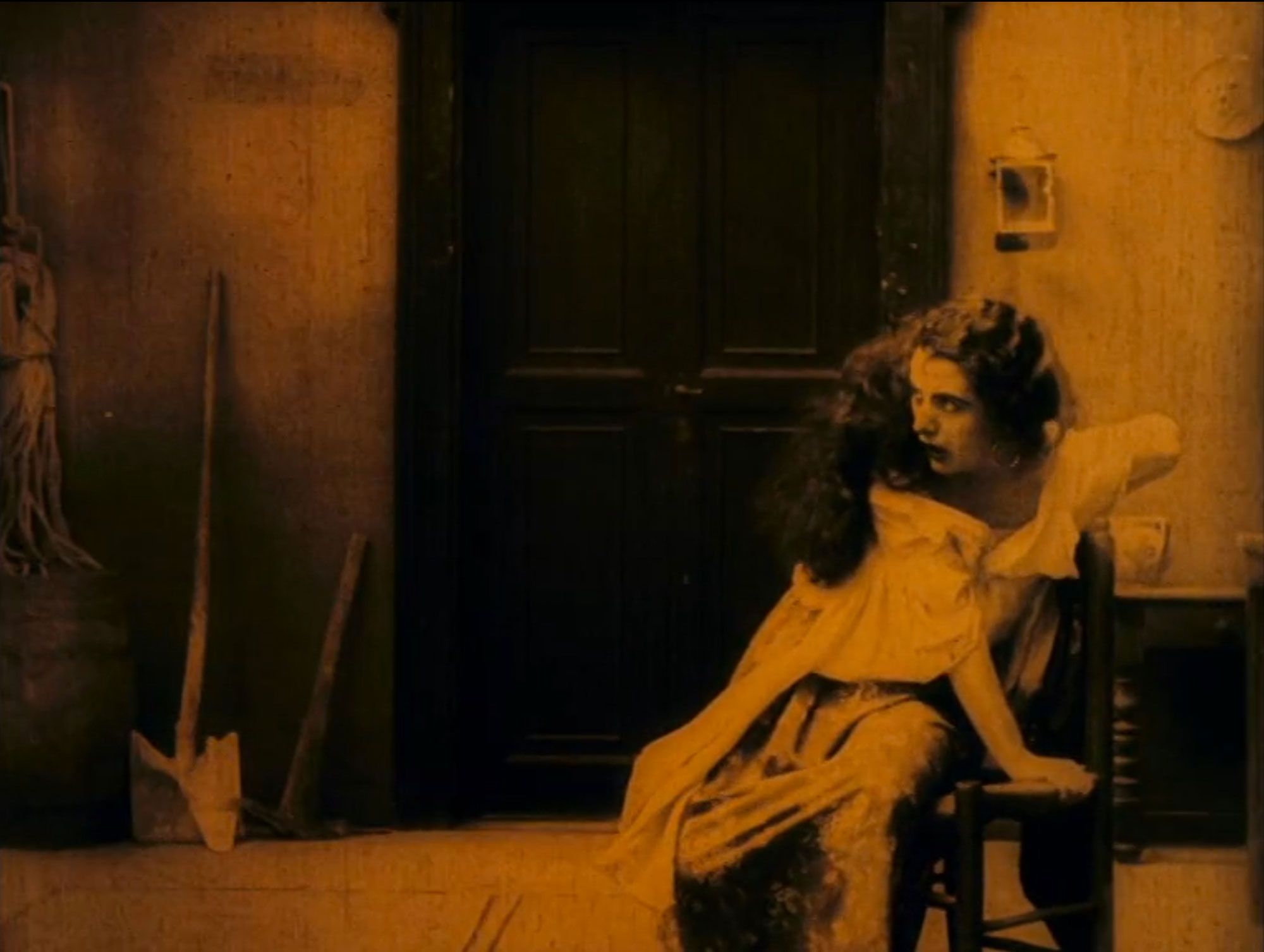
Francesca Bertini in the fragment Mariute (1918), also shown at the festival. Vimeo.
The juiciest part of this year’s silent offering for me was the section A Hundred Years Ago, because 1918 marks the apogee – and the beginning of the end – of the diva film, a sweeping phenomenon rooted in Decadentism, that dominated Italian cinema in the 1910s. It also launched its first movie stars: Lyda Borelli, Francesca Bertini and Pina Menichelli were the major ones, and this year we saw one feature film from each of them. Bertini appeared with L’Avarizia (1918), part of a series on the seven deadly sins, directed by her frequent collaborator Gustavo Serena – a well-told morality tale, though the plot is less important than the star and the outstanding costumes she parades in. The beautiful restoration brings back the colours of the original tinting, one aspect of silent films that most fascinates me as these monochrome images appear timeless and therefore always contemporary – while for example the Technicolor of the 1950s looks like the 1950s. Tinted and toned is the marvellous La Moglie di Claudio (1918) directed by Gero Zambuto under the supervision of Giovanni Pastrone, and starring Pina Menichelli – my personal favourite diva ever, because she’s the most absurdly stylized of them all (as in Il Fuoco, 1916, where she looks half woman, half owl, or Tigre Reale, 1919, where she eats a bunch of roses. For me, that’s what cinema is about). In this film she’s at her best, which means she’s selfish, unfaithful, deceitful and devoid of any ethical sense, and the final scene epitomizes the genre, with the window curtain – grabbed in a typical diva gesture – symbolizing her shroud. Lyda Borelli was represented in the retrospective with one of her greatest successes, Amleto Palermi’s Carnevalesca (1918) – rightly famous for its extravagant sets and costumes and the dramatic ending in which the diva reaches new heights of grandeur: she exits the scene like she would soon do in real life. Lyda Borelli retired from acting forever in the same year, 1918: and it’s strange to think that a hundred years ago, a big chapter in the history of the star system was already over.
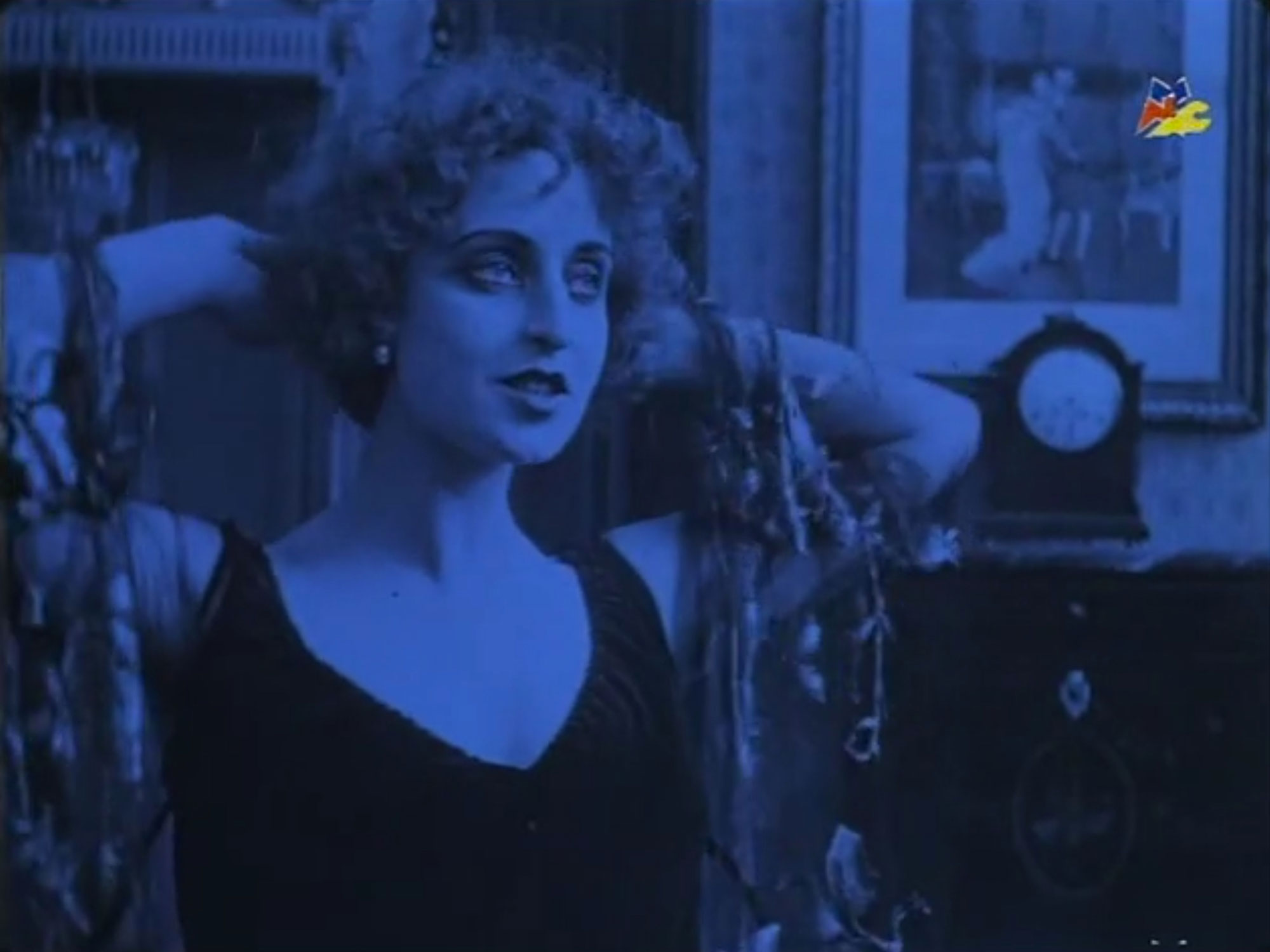
Pina Menichelli in La moglie di Claudio (1918). Vimeo.
During the 2016 festival edition we saw, within the Universal Pictures retrospective, two films by the underrated John M. Stahl. This year a whole section was devoted to him, concentrating especially on his production in the late 30s and early 40s, while a program covering his work in the silent age will be presented in Pordenone at the Giornate del Cinema Muto, in October. The first discovery was Seed (1931), a drama centered on the comparison between two female models: the modern, emancipated career girl and the family mother. Stahl’s sensibility for gender relationships already surfaces in this film, an anticipation of his unforgettable women’s pictures yet to come like the great Back Street (1933) or, next in program, Imitation of Life (1934). Overshadowed in public memory by Douglas Sirk’s remake (1955), the original version ultimately wins the comparison in its depiction of racial issues, as here the white woman and the black woman become business partners, while in the later film the entrepreneurial aspect is obliterated, and Claudette Colbert’s reasonable behaviour is a pleasure to behold compared with Lana Turner’s hysterics. I wonder if the business partnership that seems so progressive to me and the rest of the 30s public, with Colbert marketing and managing Louise Beaver’s pancakes, would be considered exploitative now. When Tomorrow Comes (1939), also remade by Sirk (as Interlude, 1957), stars Irene Dunne and Charles Boyer in an impossible romance – it’s love at first sight but he’s bound by his marriage to a sick woman who needs him, another story of unattainable happiness and of how often it’s necessary, especially for women, to put their desires aside (as Colbert has to interrupt her relationship for her daughter’s sake in the previous film). And if Immortal Sergeant (1941) is an effective wartime drama with a believable Henry Fonda, the lovely Holy Matrimony (1943) is notable as one of the few Hollywood films to show paintings that are not horrifying crusts. Crowning the retrospective, Stahl’s most famous title, the magnificent Leave Her to Heaven (1945) tinged the screen of Arlecchino colours with its daring, symbolically charged use of Technicolor that reflects Gene Tierney’s descent into murderous madness – one of the best femme fatales of all times, in this most paradoxical film, a brightly-coloured noir.
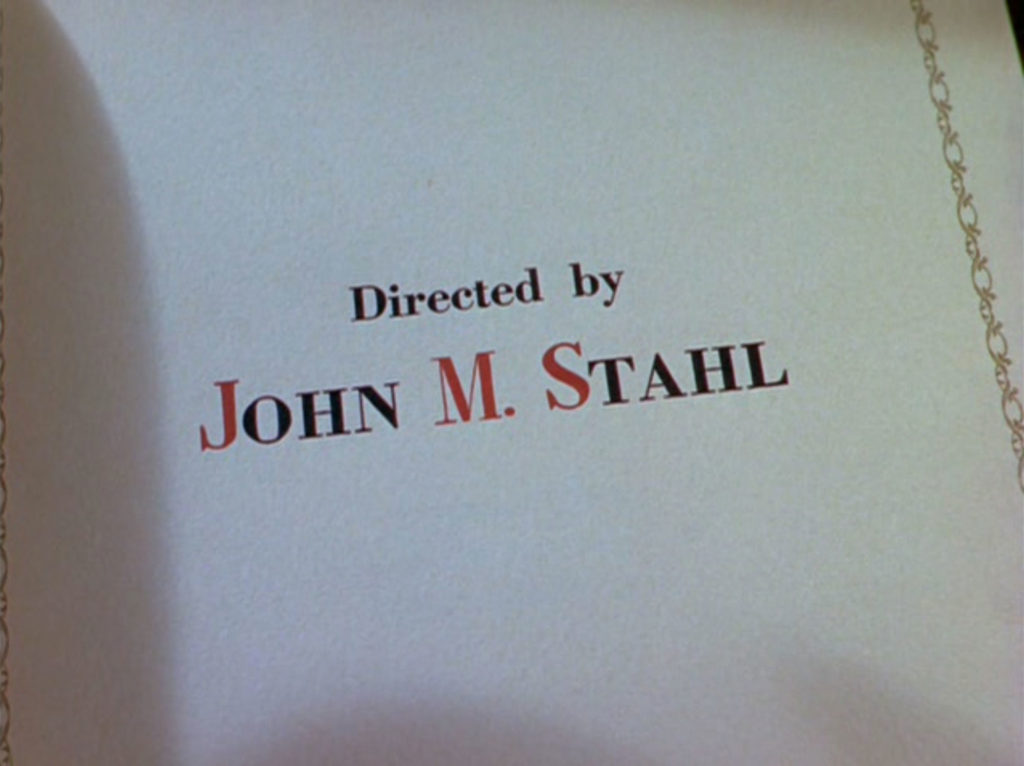
Title credits from Leave her to Heaven (1945). unateoriadegliautori.tumblr.com.
Colours dominated the festival, and if one could get lost in the silent programs and the compilations of restored fragments showcasing the wealth of colour processes that have been in use throughout film history, I chose to treat myself to a couple of projections with this aspect in mind especially: the restoration of Dario Argento’s Suspiria (1977) – also, genre-wise, an unusual example of chromatic explosion – and the silent Lights of Old Broadway (1928), an entertaining comedy that displays the hilarious talent of Marion Davies, directed by Monta Bell: this film is notable for its colour sequences that combine tinting, Technicolor and the Handschiegl process in a hybrid, experimental feast for the eyes.
Colour is also one of the themes that traverses, obliquely, each retrospective, and if it’s impossible to devote even just a few lines to each film that would deserve them, it’s also futile to attempt to retrace the thematic strands that keep crossing and intersecting each other: at Il Cinema Ritrovato, you can see Imitation of Life and, a few hours apart, discover Daïnah La Métisse (1932), a French drama about racial conflicts that could have been a great film, had it not been dramatically cut by the production and consequently rejected by its director Jean Grèmillon. You can see Andrè de Toth’s None shall Escape (1944), an American propaganda film that prefigures the Nuremberg trials, and Ingmar Bergman’s This Can’t Happen Here / High Tension (1950), a dystopian political thriller in which the Nazi-like regime of Liquidatzia threatens world peace – a strange film that was also rejected by its director and has been very rarely shown. Assonances echo back and forth, and the game of references could go on for ever: at Il Cinema Ritrovato, these connections become evident and they resonate in your mind long after the festival is over.
Next year I’ll do it again.